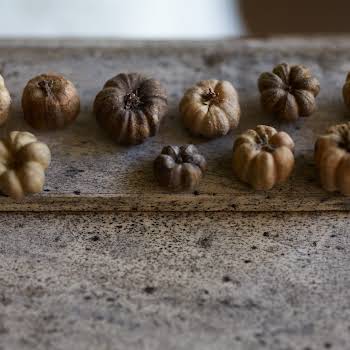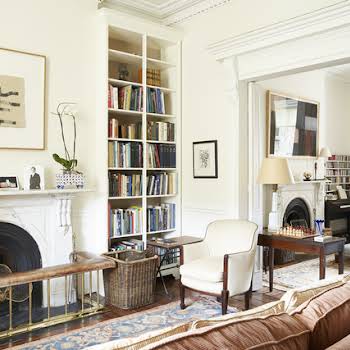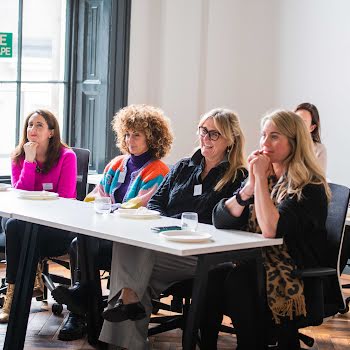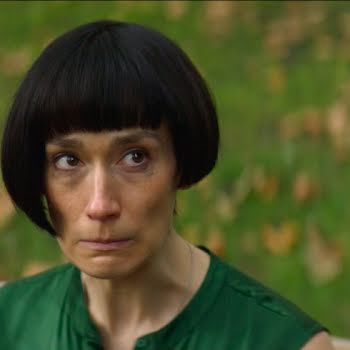
By IMAGE Interiors & Living
16th Mar 2017
16th Mar 2017
Irish design has spread to the?far reaches of the globe, influencing and inspiring’makers and crafters for decades to come. Here, we look at five iconic pieces and the story behind them.
The Non-Conformist Chair, 1926
This iconic chair design incorporates many elements of Enniscorthy native Eileen Gray’s style – elegant yet unexpected, industrial yet luxurious, considered yet creative. A true non-conformist herself, Gray’s body of work would be a source of both envy and inspiration to any boundary-pushing contemporary designer.
Conceived in 1926, the streamlined seat, made of tubular steel and leather, marries the slightly contradictory ideas of functionality and freedom at the core of the Modernist mindset. According to Gray, ?An armrest was omitted in order to leave the body more freedom in movement and to allow it to bend forward or to turn to the other side unrestricted.?
Nearly 40 years after her death, Gray posthumously received a special lifetime achievement award in 2015 from the Institute of Designers in Ireland. Proof her ingenious influence continues to endure. Michelle Hanley

The Non-Conformist Chair, Eileen Grey, at Aram Designs
Ogham
Remaining somewhat of a mystery throughout the centuries, ogham and its elusive origins continues to be the subject of archaeological questioning. Dating back to 5AD, ogham’s characteristic rectilinear strokes commemorate named men, their fathers and tribal links, while the stone itself could have acted as a boundary marker or burial site.
From 7AD onwards, ogham was written on manuscripts, becoming an academic tool for studying poetry and grammar, and in so doing preserving the ogham for today’s modern studies.
Ogham hasn’t just made an impact in an historical sense, its enigmatic beauty has become an icon for contemporary design. At 2015’s London Design Festival in the Victoria and Albert Museum, this colossus of Irish design was represented in a fitting way – with scale.
In an impressive collaboration, Grafton Architects worked with Graphic Relief to create The Ogham Wall; an immense suffusion of 23 solid concrete fins. The fins were placed to allow visitors to pass through the columns like a walk in the woods. Jenna Meade?

V&A Museum, image via Irish Design 2015
The May Morris panel, 1891-2, completed in 1902
History may not have remembered the work of Susan ?Lily? Yeats as well as that of her famous brothers, William and Jack, but her contribution to the Irish arts should not be underestimated.
A formative part of the the international arts and crafts movement, Lily Yeats co-founded the Dun Emer craft guild in Dundrum, Dublin, in 1902, with her younger sister Elizabeth and English designer Evelyn Gleeson. The collective was established to champion classical Irish arts and crafts while also giving young Irish women an opportunity to learn valuable skills.
Later, the sisters set up Cuala Industries, where Lily taught the extensive embroidery expertise she’d acquired working for Morris & Co textiles in London. Before her return to Dublin, Lily had assisted in embroidering the May Morris panels, a?pair of natural linen hanging panels under the tutelage of May Morris. The natural dyed crewel wool patterns in soft pastels were hand-sewn with satin stitches and French knots, taking four years to finish.
The set, originally commissioned by May’s friend Theodosia Middlemore and modelled on an earlier design conceived for the Morris family home in Oxfordshire, sold at Christie’s in London for around €60,000 in 2013. Kate Phelan

The May Morris panel
Louis le Brocquy’s The T?in: Armies Massing, 1969
In 1968, le Brocquy was approached by the visionary producer Liam Miller to illustrate the tale of the T?in B? C?ailnge for Dolmen Press’s The T?in, which would later come to be regarded as the greatest Irish livre d?artiste. For six months he worked on hundreds of brush drawings influenced by Eastern calligraphy to correspond with the translation of the legend by poet Thomas Kinsella.
The T?in chronicles the attempted capture of the Brown Bull of Cooley from the King of Ulster, Conchobar, and his chief warrior, C?chulainn. Louis le Brocquy’s iconic image, originally a double-page illustration, depicts the army raised by Queen Medb of Connacht anticipating assault.
Based on the original 1969 design, this tapestry was commissioned by RT? in 2000 to hang in the new Television Programming Building at the request of the architect, Dr Ronald Tallon. It retains the original black and white colour scheme, to mirror the T?in text it originally accompanied – described by le Brocquy as, ‘shadows thrown by the text?.
The tapestry was hand-woven at the Atelier Ren? Duch? in Aubusson, France – an area acclaimed for tapestry-making since the 16th century – and, at 30 square metres, is an arresting sight for the viewer. A pinnacle work by an artist, born in 1916, who has had a profound effect on the Irish design aesthetic – and whose influence will undoubtedly be felt for the next 100 years.?Michelle Hanley

?The T?in: Armies Massing by Louis le Broquy, Atelier Ren? Duch?
IQlight (Interlocking Quadrilaterals Light), 1973
Kilkenny Design Workshop was launched in the stable yard of Kilkenny Castle, now home to the National Craft Gallery. Holger Str’m, a Danish resident designer at the workshop, was asked to create a series of lanterns as Christmas decorations for the KDW.
?I constructed them using an equal number of modules for the sphere and the cylinder,? he later recalled. ?It was just a Christmas decoration, but I couldn’t completely forget the idea. I wanted to make it with identical modules.?
These PVC modules were in the form of a rhombus – a shape that had fascinated Str’m throughout his time in Kilkenny – with hooks at the end, allowing a user to create 21 different styles. Much like the KDW, the IQlight was a resounding success, winning many awards and selling thousands worldwide.?Michelle Hanley

Holger Str’m with the?IQlight






















